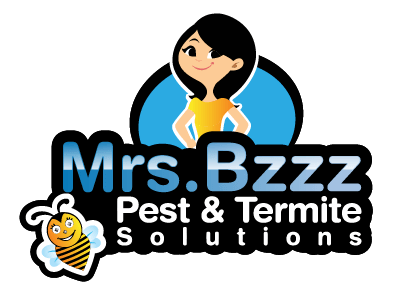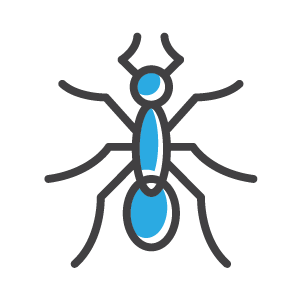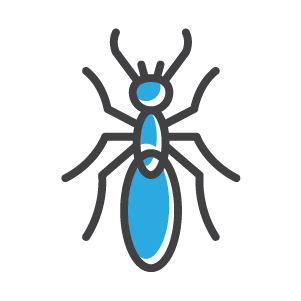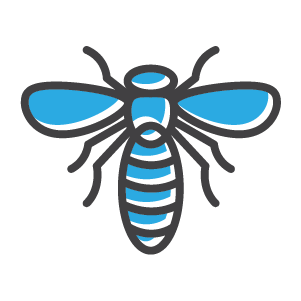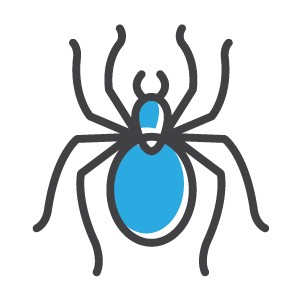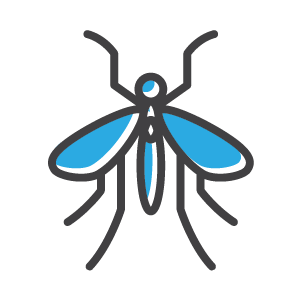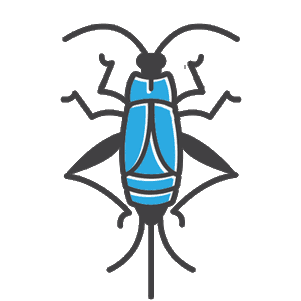Stinging Insect Control
Trying to get rid of stinging insects yourself can pose serious hazards. Wasps, bees and other stinging insects often build their nests and hives in elevated or hard-to-reach spots. This places you at a disadvantage when attempting to destroy them and they can retaliate by attacking you as they swarm to protect their hive. Chemical sprays may not be effective in killing these insects and could instead aggravate them, leading to an attack. Stings can cause painful swelling, infection, nausea, and allergic reaction. The most prudent and secure course of action is to hire a professional and local pest control company.
Hire Mrs. Bzzz to Get Rid of Wasps and Stinging Insects
If you are dealing with a wasp, yellow jacket or hornet infestation, you need it taken care of quickly and professionally. You can trust our wasp exterminators to treat and remove every wasp nest on or near your home. Wasp infestations can be worrisome, but with Mrs. Bzzz, all your wasp infestation problems will be eliminated! We are happy to be part of the solution to eliminate wasp infestations.
Mrs. Bzzz also offers Homecare Service Packages to handle all of your pest control needs including roaches, termites and ants.
How Did I Get Stinging Insects?
Wasps, hornets, bees, and yellow jackets are constantly on the lookout for ideal spots to construct their hives. They prefer nesting in places such as attics, gutters, under decks or eaves, as these locations offer natural structural safeguards.
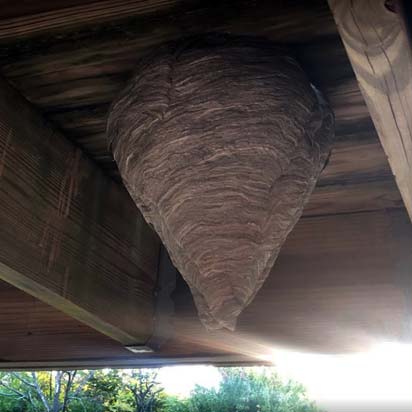
How to Know if You Have a Wasp or Hornet Infestation?
- You may observe them hovering around your home or garage
- Someone in your household getting stung
- Hearing buzzing noises made by bees, hornets, wasps, and yellow jackets
- Finding them in your home
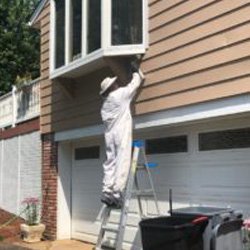
Types Of Bees & Wasps Found In Hudson Valley
Carpenter Bee
Size: Ranging from ¾” to 1”
Color: Dark yellow and black
Identification: Similar in appearance to honey bees, but notably bigger
Preferred Habitat: Build their nests in wood, especially aged and unpainted wood, and are often seen flying around the eaves of houses or wooden fences
Behavior: Bore circular holes in the wood for nesting purposes, but typically do not cause substantial structural harm unless a large population resides in a particular area for an extended period. Males may exhibit aggressive behavior but cannot sting.
Honey Bee
Size: Measuring about ½'
Color: Yellow and dark brown
Identification: These fuzzy bees can be spotted near blooming plants as they collect pollen and nectar for honey production.
Preferred Habitat: Generally construct their nests within tree hollows, although they may also reside beneath rocks.
Behavior: Typically not hostile, but will defend the colony against perceived threats. Their sting can be agonizing and result in a severe response in people who are allergic.
Yellow Jackets
Size: Ranging from 5/8" to 12"
Color: Yellow and black Identification: Can be mistaken for honeybees due to their coloring, but have a slender waist.
Preferred Habitat: Build their nests in tree stumps, fallen logs, or on the ground.
Behavior: Hunt a variety of insects, as well as scavenge for human foods, notably sugary and meaty items. They are highly sociable and will aggressively safeguard their nests. Their stings can be highly uncomfortable and provoke severe reactions in individuals who are allergic. The reproductive members of the colony swarm at least once each year.
Bald Faced Hornets
Size: Ranging from 3/4" to 1"
Color: Featuring white and black markings
Identification: Their appearance is predominantly black from head to abdomen, with consistent white stripes and bands across all individuals. Preferred Habitat: Forested areas and urban settings with plant life. This species commonly constructs their nests in trees, shrubs, rock formations, and beneath the eaves of residential structures.
Behavior: Bald-faced hornets are most active during daylight hours, when they focus on constructing their nests, caring for their offspring, and foraging for food to consume or bring back to their developing larvae. At night, they take refuge inside their nest.

Contact Mrs. Bzzz
Save Our Contact Info
Mrs. Bzzz - Hudson Valley
8 Hammer Ln
Walden, NY 12586
(845) 670-5888
Mrs. Bzzz - Westchester County
(914) 297-8494
Mrs. Bzzz Pest & Termite Solutions
1330 Hamburg Turnpike 2nd Floor
Wayne, NJ 07470
(973) 513-3501
Mrs. Bzzz - Southern New Jersey
(609) 642-9360
